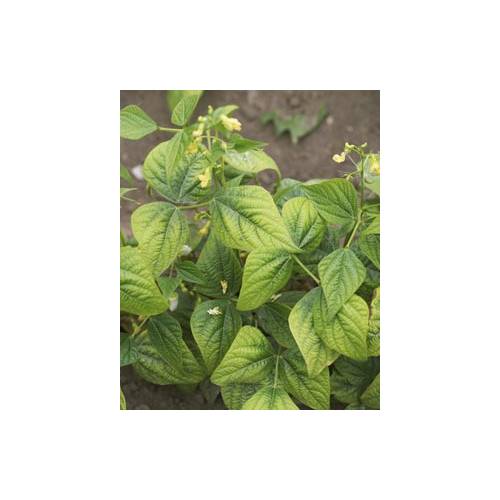
Deficiencies
Other nutritional deficiencies
- Details
-
If iron deficiency is the most common, the lack of certain nutritional elements (trace elements) is always damaging to plants. Do not mistake it for contagious diseases otherwise; you might not succeed in curing the plant.
The symptoms
When a plant suffers from a lack of nutrients, its growth stops and its leaves show unusual signs (presence of stripes or reddish tint). On tomatoes, the deficiency of some mineral elements provokes the apparition of a black spot at the extremity of young fruits (this is called ‘blossom end rot'), and the leaves develop pale brown spots. Nutritional deficiency is mostly found on poor soils, such as sandy ones washed down by rain or on rubble, as that found near recently built properties.
Beware: you must not mistake a deficiency with the effects of a weed killer ill applied. Herbicides provoke irregular discolorations, variable from one plant to another and that happens suddenly, whilst the effects of a deficiency are observed progressively.
Lifecycle
The lack of some nutrients has a tendency to get better with time, contrary to a deficiency in iron, which gets worse. Indeed, the missing nutrient will be eventually brought to the plant naturally, even if this can take a few years. Like in the case of iron deficiency, some plants are more sensitive to it than others are. Demanding vegetables (tomatoes, sweet corn, beans) show more easily deficiencies in mineral elements than less demanding crops (lettuces, for example).
How to fight it
When facing a deficiency in trace elements, you have a choice of two methods. The first one consists of watering the foot of the plant with a trace elements mix (chemical origin), which has the effect of making the symptoms disappear rapidly. The other method relies on a copious layer of matured compost at the foot of the plant, raking the soil to make it penetrate close to its roots. The result is less rapid but is closer to the plants needs. A matured decoction (manure of comfrey aged more than three weeks, diluted and mixed in when watering) can also alleviate the symptoms without making them disappear for sure.
How to avoid it
A well-balanced nutrition ensures that the plant is not lacking in trace elements. For example, placing a mulch to decompose slowly at the foot of the plant brings them nutritional elements in a balanced manner. Some plants do not like a thick layer at their feet, as their roots could asphyxiate. In that case, it is better to give them matured compost as a preventative measure. End of winter is always the best time to supply plants with compost.
Good to know
An excessive supply of chemical fertiliser can cause a nutritional deficiency in trace elements. Indeed, fertilisers stimulate plant's growth but if it does not contain trace elements, the plant could have a lack of them, and then show signs of deficiency. You must supply your plants with a complete fertiliser and of course only when they need it. - Photos (1)

